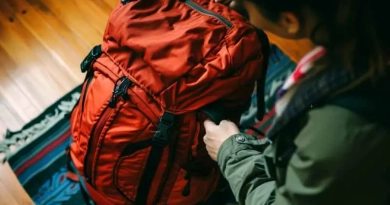
Should You Have A Bug-Out Bag, And What Should It Include?
A critical question for any serious prepper: “Should I have a bug-out bag, and what should it include?” A bug-out bag, often abbreviated as BOB, is a portable kit that contains essential items to sustain you for 72 hours when you need to evacuate your home due to an emergency. Let’s delve into this vital topic, breaking it down into clear, actionable steps.
The question, “Should I have a bug-out bag, and what should it include?” is essential for anyone serious about preparedness. A bug-out bag is not just about survival; it’s about ensuring safety, comfort, and readiness in times of crisis. This guide aims to provide a comprehensive answer, helping you understand the importance of a bug-out bag and what to pack in it.
Why Have a Bug-Out Bag?
- Immediate Evacuation: In an emergency, you might need to leave your home quickly. A bug-out bag ensures you have the necessities to survive and stay safe.
- Versatility: Whether it’s a natural disaster, civil unrest, or an unforeseen event, having a well-prepared bag can help you navigate through various situations.
- Peace of Mind: Knowing you have a bag ready for emergencies can provide peace of mind and reduce panic when disaster strikes (Tactical) (Survival Sullivan).
Common Obstacles
- Weight and Mobility: A bug-out bag needs to be lightweight enough to carry but comprehensive enough to include essential items.
- Customization: Each person’s needs can vary based on climate, health, and personal circumstances. Customizing your bag to suit these needs is crucial.
- Maintenance: Regularly updating and maintaining the contents of your bug-out bag is essential to ensure everything is in working order and not expired (Bug Out Bag Academy) (The Survival University).
The Best Solution and How to Implement It
Step-by-Step Guide to Building a Bug-Out Bag
- Choose the Right Bag:
- Backpack Type: Opt for a durable, comfortable backpack with multiple compartments. It should be large enough to hold all your essentials but not so bulky that it hinders movement.
- Weight Distribution: Ensure the bag has good weight distribution features, such as padded shoulder straps and a waist belt (The Survival University) (Primal Survivor).
- Essential Items to Include:
Water and Purification:
- Water Supply: Pack at least 1-3 quarts of water per person per day.
- Purification Methods: Include water purification tablets, portable water filters (like Lifestraw or Sawyer), and a metal pot or cup for boiling water (Tactical) (Primal Survivor).
Food:
- Non-Perishable Items: High-calorie, easy-to-prepare foods like energy bars, trail mix, beef jerky, and peanut butter.
- Cooking Supplies: A portable stove, mess kit, and utensils if space allows (Tactical) (Primal Survivor).
Clothing and Shelter:
- Clothing: Three days’ worth of clothing, including layers for varying weather conditions. Choose moisture-wicking materials, and pack extra socks and underwear.
- Shelter: Lightweight tent, tarp, bivvy bag, and emergency blankets. Include items like a sleeping bag suitable for your climate (Survival Sullivan) (The Survival University).
First Aid and Hygiene:
- First Aid Kit: Comprehensive supplies, including bandages, antiseptics, medications, and a manual.
- Hygiene Items: Toothbrush, toothpaste, soap, shampoo, body wipes, and feminine hygiene products (Tactical) (Primal Survivor).
Tools and Safety:
- Fire Starting: Matches, lighters, ferro rods, and fire-starting tinder like cotton balls with Vaseline.
- Tools: multi-tool, knife, duct tape, paracord, and a small shovel.
- Safety: self-defense items like pepper spray, and a whistle for signaling (Bug Out Bag Academy) (The Survival University).
Navigation and Communication:
- Navigation: map of the area, compass, and GPS device if available.
- Communication: hand-crank radio, extra batteries, and a list of emergency contacts (Primal Survivor).
- Regular Updates and Maintenance:
- Check Expiry Dates: Regularly check the expiration dates of food, medications, and other perishable items.
- Practice Drills: Periodically practice using your bug-out bag to ensure everything is in working order and you are familiar with the contents (The Survival University) (Primal Survivor).
Resources and Tools Needed
To assemble and maintain your bug-out bag, you will need:
- Backpack: durable and comfortable with good weight distribution.
- Water Purification Tools: Tablets, filters, and a metal pot.
- First Aid Supplies: A comprehensive first aid kit tailored to your family’s needs.
- Navigation and Communication Devices: Maps, compass, hand-crank radio.
- Survival Guides: books or printed guides on survival techniques and emergency procedures (Tactical) (Primal Survivor).
Conclusion
The question, “Should I have a bug-out bag, and what should it include?” is answered with a resounding yes. A bug-out bag is essential for ensuring your family’s safety and comfort during an emergency. By carefully selecting and maintaining the right supplies, you can face any crisis with confidence and resilience.
Preparation is about more than just having supplies; it’s about being ready to act. Stay prepared, stay safe, and embrace the journey of readiness with determination and calm. For further information and resources, visit Bug Out Bag Academy, Survival Sullivan, and Primal Survivor.






